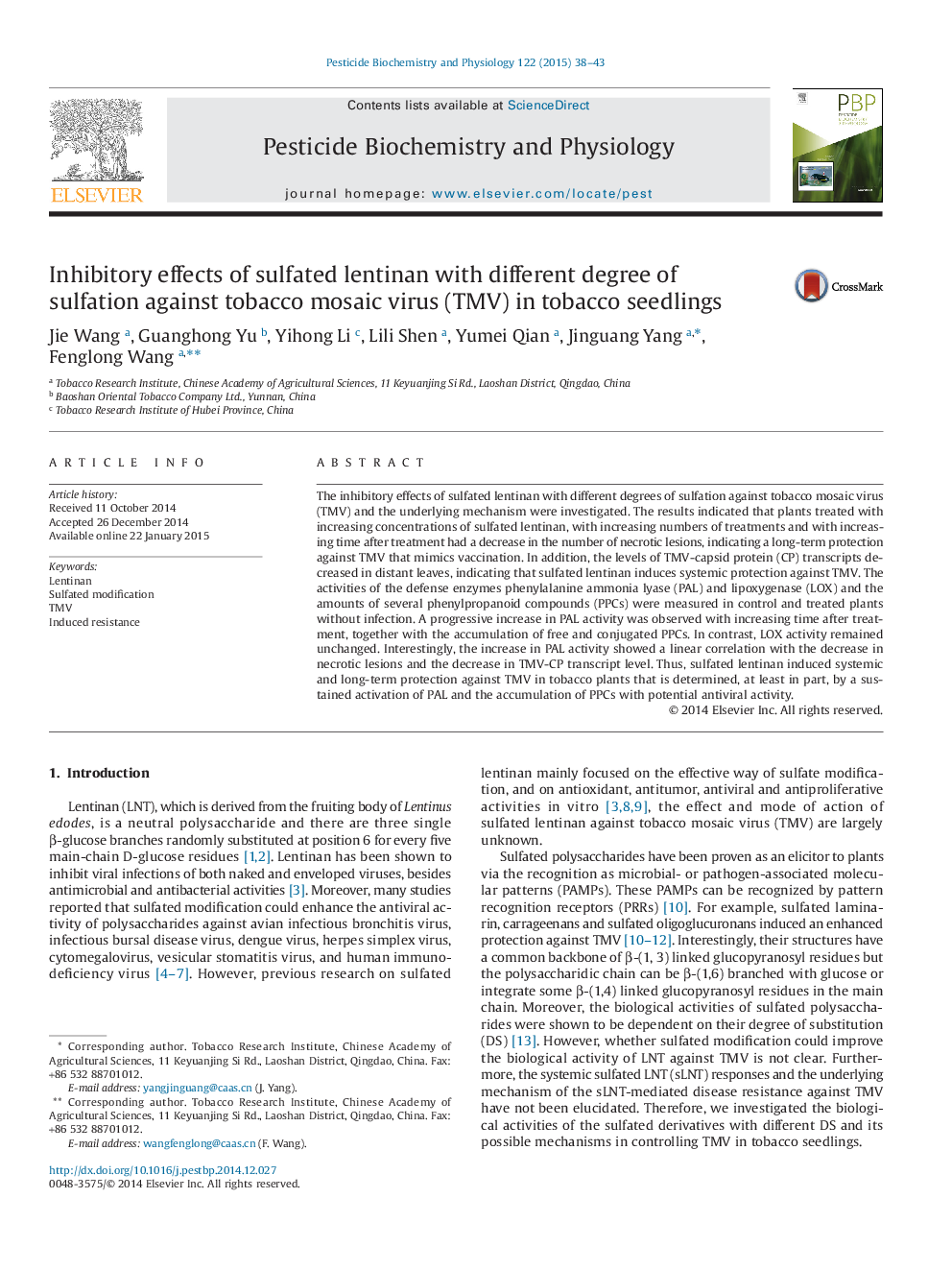| Article ID | Journal | Published Year | Pages | File Type |
|---|---|---|---|---|
| 2009053 | Pesticide Biochemistry and Physiology | 2015 | 6 Pages |
•Sulfated modification enhanced antiviral activity of lentinan against TMV.•The activity of sulfated lentinan was closely related to the degree of sulfation.•The mechanism might be attributed to stimulate the expression of defense enzymes andantioxidant enzymes.
The inhibitory effects of sulfated lentinan with different degrees of sulfation against tobacco mosaic virus (TMV) and the underlying mechanism were investigated. The results indicated that plants treated with increasing concentrations of sulfated lentinan, with increasing numbers of treatments and with increasing time after treatment had a decrease in the number of necrotic lesions, indicating a long-term protection against TMV that mimics vaccination. In addition, the levels of TMV-capsid protein (CP) transcripts decreased in distant leaves, indicating that sulfated lentinan induces systemic protection against TMV. The activities of the defense enzymes phenylalanine ammonia lyase (PAL) and lipoxygenase (LOX) and the amounts of several phenylpropanoid compounds (PPCs) were measured in control and treated plants without infection. A progressive increase in PAL activity was observed with increasing time after treatment, together with the accumulation of free and conjugated PPCs. In contrast, LOX activity remained unchanged. Interestingly, the increase in PAL activity showed a linear correlation with the decrease in necrotic lesions and the decrease in TMV-CP transcript level. Thus, sulfated lentinan induced systemic and long-term protection against TMV in tobacco plants that is determined, at least in part, by a sustained activation of PAL and the accumulation of PPCs with potential antiviral activity.
Graphical AbstractFigure optionsDownload full-size imageDownload as PowerPoint slideSulfated lentinan (sLNT) with different degree of sulfation strongly inhibited the infection of tobacco mosaic virus (TMV) in tobacco seedlings.
